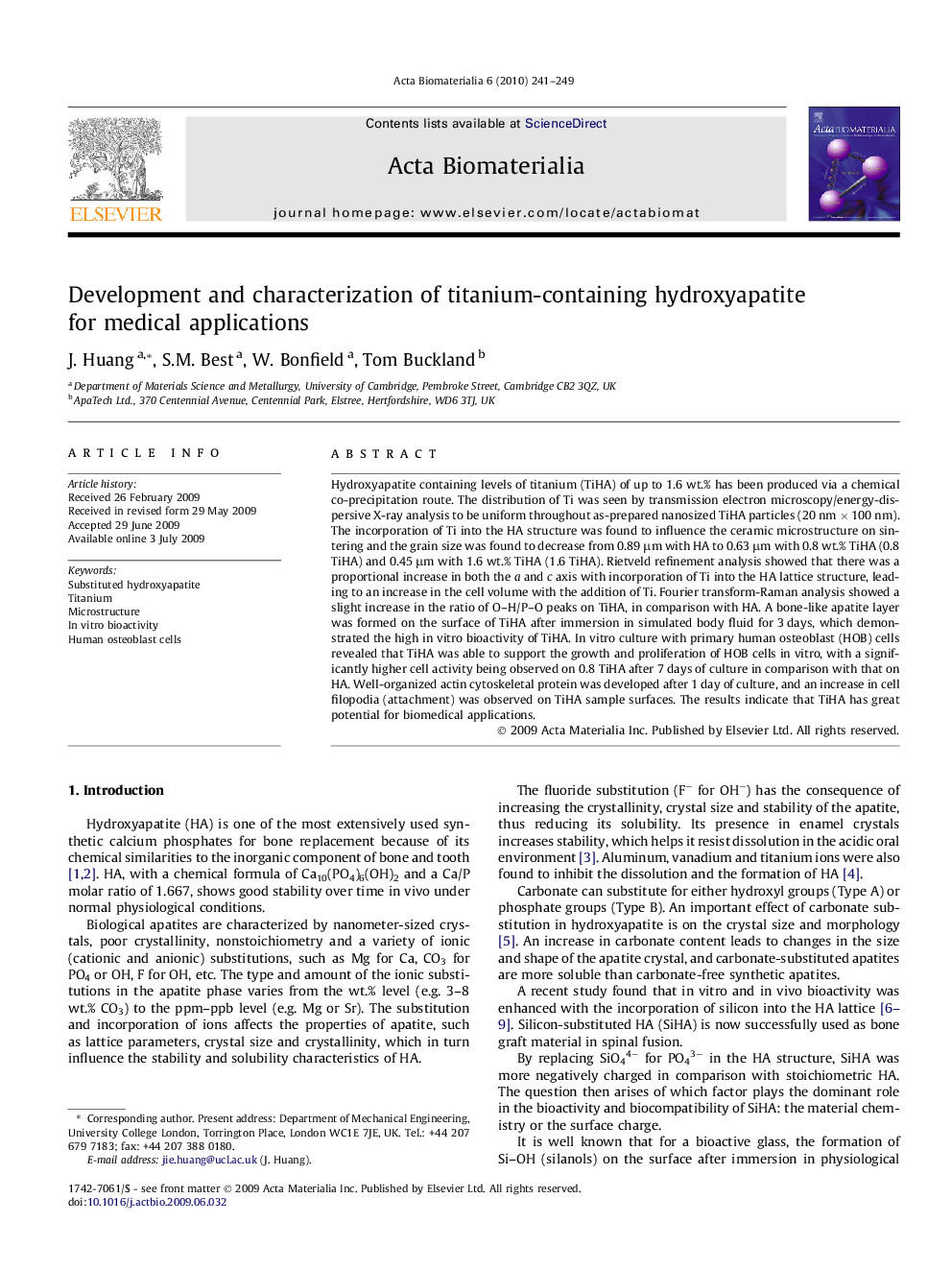| Article ID | Journal | Published Year | Pages | File Type |
|---|---|---|---|---|
| 10160399 | Acta Biomaterialia | 2010 | 9 Pages |
Abstract
Hydroxyapatite containing levels of titanium (TiHA) of up to 1.6 wt.% has been produced via a chemical co-precipitation route. The distribution of Ti was seen by transmission electron microscopy/energy-dispersive X-ray analysis to be uniform throughout as-prepared nanosized TiHA particles (20 nm Ã 100 nm). The incorporation of Ti into the HA structure was found to influence the ceramic microstructure on sintering and the grain size was found to decrease from 0.89 μm with HA to 0.63 μm with 0.8 wt.% TiHA (0.8 TiHA) and 0.45 μm with 1.6 wt.% TiHA (1.6 TiHA). Rietveld refinement analysis showed that there was a proportional increase in both the a and c axis with incorporation of Ti into the HA lattice structure, leading to an increase in the cell volume with the addition of Ti. Fourier transform-Raman analysis showed a slight increase in the ratio of O-H/P-O peaks on TiHA, in comparison with HA. A bone-like apatite layer was formed on the surface of TiHA after immersion in simulated body fluid for 3 days, which demonstrated the high in vitro bioactivity of TiHA. In vitro culture with primary human osteoblast (HOB) cells revealed that TiHA was able to support the growth and proliferation of HOB cells in vitro, with a significantly higher cell activity being observed on 0.8 TiHA after 7 days of culture in comparison with that on HA. Well-organized actin cytoskeletal protein was developed after 1 day of culture, and an increase in cell filopodia (attachment) was observed on TiHA sample surfaces. The results indicate that TiHA has great potential for biomedical applications.
Related Topics
Physical Sciences and Engineering
Chemical Engineering
Bioengineering
Authors
J. Huang, S.M. Best, W. Bonfield, Tom Buckland,
